| Description: |
Usnic acid has antitumoral, acaricidal, larvicidal, antiviral, antibiotic, antipyretic, analgesic,gastroprotective, antioxidative and anti-inflammatory activities. Use of reconstituted bovine type-I collagen-based films containing usnic acid can improve burn healing process in rats. Usnic acid perturbs various interrelated signaling pathways and that autophagy induction is a defensive mechanism against usnic acid-induced cytotoxicity; it disturbs calcium homeostasis, induces ER stress, and that Usnic acid-induced cellular damage occurs at least partially via activation of the Ca(2+) channel of SOCE.
|
| Targets: |
Calcium Channel | Autophagy | Caspase | JNK | SOD | TNF-α | IL Receptor | NOS | Antifection |
| In vitro: |
| Parasitol Res. 2014 Jun;113(6):2387-90. | | Acaricidal activity of usnic acid and sodium usnic acid against Psoroptes cuniculi in vitro.[Pubmed: 24770718] | Usnic acid, a major active compound in lichens, was first isolated in 1884. Since then, Usnic acid and its sodium salt (sodium Usnic acid) have been used in medicine, perfumery, cosmetics, and other industries due to its extensive biological activities. However, its acaricidal activity has not been studied. In this paper, we investigated the acaricidal activity of Usnic acid and sodium Usnic acid against Psoroptes cuniculi in vitro.
METHODS AND RESULTS:
After evaluating the acaricidal activity and toxicity of Usnic acid and sodium Usnic acid in vitro, the results showed that at doses of 250, 125, and 62.5 mg/ml, Usnic acid and sodium Usnic acid can kill mites with 91.67, 85.00, and 55.00% and 100, 100, and 60.00% mortality after treatment 24 h. The LT50 values were 4.208, 8.249, and 16.950 h and 3.712, 7.339, and 15.773 h for Usnic acid and sodium Usnic acid, respectively.
CONCLUSIONS:
Sodium Usnic acid has a higher acaricidal activity than Usnic acid, which may be related to the difference in their structures. | | Z Naturforsch C. 2006 Nov-Dec;61(11-12):773-6. | | Identification and quantitation of usnic acid from the lichen Usnea species of Anatolia and antimicrobial activity.[Pubmed: 17294685] | Six species of lichens, such as Usnea florida, Usnea barbata, Usnea longissima, Usnea rigida, Usnea hirta and Usnea subflorida, were collected from different areas of Anatolia (district of Antalya, Karabük, Qankiri, Giresun and Trabzon) in Turkey.
METHODS AND RESULTS:
Their Usnic acid amounts in acetone extracts were determined by HPLC. In addition, antimicrobial activities of these extracts were determined against Escherichia coli (ATCC 35218), Enterococcus faecalis (RSKK 508), Proteus mirabilis (Pasteur Ens. 235), Staphylococcus aureus, Bacillus subtilis and Bacillus megaterium.
CONCLUSIONS:
It was shown that with increasing amount of Usnic acid, the antimicrobial activity increased. Usnic acid contents of Usnea species varied between 0.22-6.49% of dry weight. | | Lat. Am. J. Pharm., 2009, 300(2): R349-60. | | Larvicidal Activity of Cladonia substellata Extract and Usnic Acid against Aedes aegypti and Artemia salina[Reference: WebLink] | The chloroform extract of Cladonia substellata Vainio was assayed against larvae of Aedes ae- gypti, the mosquito vector of Dengue fever and Artemia salina.
METHODS AND RESULTS:
The extract was tested at concentrations ranging from 1 to 15 ppm in an aqueous medium for 24 h. LC50 and LC90 were evaluated. Since the chlo- roform extract proved to be lethal for third to fourth instar larvae, downstream processing was undertak- en to purify the active agents in the extract. The major compound in the chloroform extract was purified by crystallization followed by column chromatography to yield yellow crystals. Furthermore, Usnic acid (UA) was evaluated for its larvicidal potential. The major compound in the chloroform extract, UA, exhib- ited LC50 of 6.6 ppm (6.1 to 7.0 ppm). Therefore, UA is most likely the active principle in C. substellata.
CONCLUSIONS:
UA showed to be toxic to A. salina, a reference organism in assays to evaluate the potential toxicity hazard to invertebrates in ecosystems. |
|
| In vivo: |
| Int Immunopharmacol. 2014 Oct;22(2):371-8. | | Usnic acid protects LPS-induced acute lung injury in mice through attenuating inflammatory responses and oxidative stress.[Pubmed: 25068825] | Usnic acid is a dibenzofuran derivative found in several lichen species, which has been shown to possess several activities, including antiviral, antibiotic, antitumoral, antipyretic, analgesic, antioxidative and anti-inflammatory activities. However, there were few reports on the effects of Usnic acid on LPS-induced acute lung injury (ALI). The aim of our study was to explore the effect and possible mechanism of Usnic acid on LPS-induced lung injury.
METHODS AND RESULTS:
In the present study, we found that pretreatment with Usnic acid significantly improved survival rate, pulmonary edema. In the meantime, protein content and the number of inflammatory cells in bronchoalveolar lavage fluid (BALF) significantly decreased, and the levels of MPO, MDA, and H2O2 in lung tissue were markedly suppressed after treatment with Usnic acid. Meanwhile, the activities of SOD and GSH in lung tissue significantly increased after treatment with Usnic acid. Additionally, to evaluate the anti-inflammatory activity of Usnic acid, the expression of pro-inflammatory cytokines including tumor necrosis factor alpha (TNF-α), interleukin-6 (IL-6) and anti-inflammatory cytokine IL-10, and chemokines interleukin-8 (IL-8) and macrophage inflammatory protein-2 (MIP-2) in BALF were studied. The results in the present study indicated that Usnic acid attenuated the expression of TNF-α, IL-6, IL-8 and MIP-2. Meanwhile, the improved level of IL-10 in BALF was observed.
CONCLUSIONS:
In conclusion, these data showed that the protective effect of Usnic acid on LPS-induced ALI in mice might relate to the suppression of excessive inflammatory responses and oxidative stress in lung tissue. Thus, it was suggested that Usnic acid might be a potential therapeutic agent for ALI. | | J Biomed Biotechnol. 2011;2011:761593. | | Collagen-based films containing liposome-loaded usnic acid as dressing for dermal burn healing.[Pubmed: 21274404] | The aim of this study was assess the effect of collagen-based films containing Usnic acid as a wound dressing for dermal burn healing.
METHODS AND RESULTS:
Second-degree burn wounds were performed in forty-five Wistar rats, assigned into nine groups: COL-animals treated with collagen-based films; PHO-animals treated with collagen films containing empty liposomes; UAL-animals treated with collagen-based films containing Usnic acid incorporated into liposomes. After 7, 14, and 21 days the animals were euthanized. On 7th day there was a moderate infiltration of neutrophils, in UAL, distributed throughout the burn wounds, whereas in COL and PHO, the severity of the reaction was slighter and still limited to the margins of the burn wounds. On the 14th day, the inflammatory reaction was less intense in UAL, with remarkable plasma cells infiltration. On the 21st day, there was reduction of the inflammation, which was predominantly composed of plasma cells in all groups, particularly in UAL. The use of the Usnic acid provided more rapid substitution of type-III for type-I collagen on the 14th day, and improved the collagenization density on the 21st day.
CONCLUSIONS:
It was concluded that the use of reconstituted bovine type-I collagen-based films containing Usnic acid improved burn healing process in rats. |
|


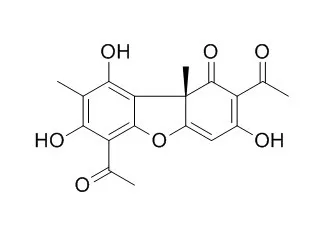

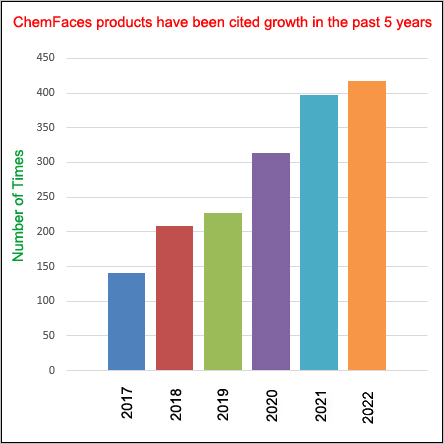
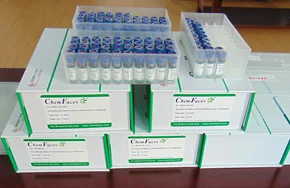
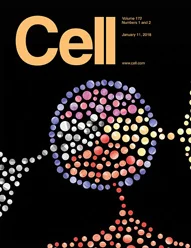 Cell. 2018 Jan 11;172(1-2):249-261.e12. doi: 10.1016/j.cell.2017.12.019.IF=36.216(2019)
Cell. 2018 Jan 11;172(1-2):249-261.e12. doi: 10.1016/j.cell.2017.12.019.IF=36.216(2019)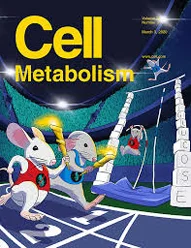 Cell Metab. 2020 Mar 3;31(3):534-548.e5. doi: 10.1016/j.cmet.2020.01.002.IF=22.415(2019)
Cell Metab. 2020 Mar 3;31(3):534-548.e5. doi: 10.1016/j.cmet.2020.01.002.IF=22.415(2019)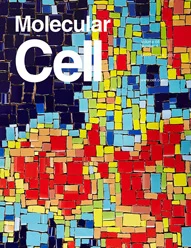 Mol Cell. 2017 Nov 16;68(4):673-685.e6. doi: 10.1016/j.molcel.2017.10.022.IF=14.548(2019)
Mol Cell. 2017 Nov 16;68(4):673-685.e6. doi: 10.1016/j.molcel.2017.10.022.IF=14.548(2019)